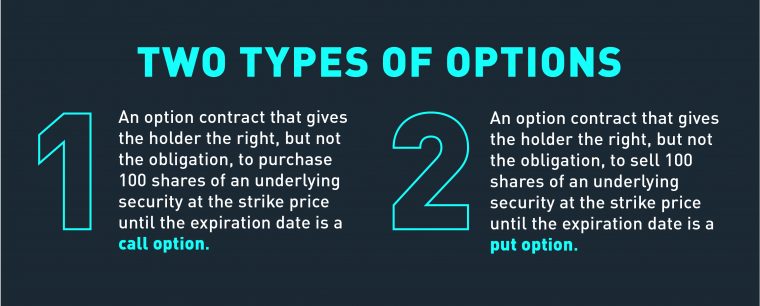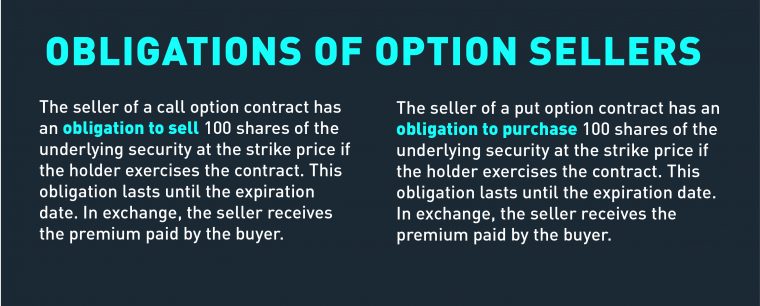Trading your First Option

As an investor, the first thing you need to know is how to choose which securities to buy. The second is when to sell them. That’s pretty easy, right?
In this article, you will learn how to trade your first option. As you will see, you do not need to be an expert to start trading options. You just need to be familiar with the risk of holding shares, and the risk of missing an opportunity once you have sold your shares. Investors already have a good understanding of these two risks. In fact, you have probably already noticed that once you buy shares, the price will start to fall, and that the reverse is also true: once you sell them, the price starts to rise (as if by magic!). You may have noticed that we are not talking about options yet, we are just talking about the risks associated with the normal activities of the average investor. Since these two risks are already there, you need to ensure that adding options to your portfolio will not add any more risks. Because, depending on the strategies you use, it is clear that options can expose you to new risks, such as time decay, volatility, etc. Such risks are covered in more advanced training on options trading.
Difference between a share and an option
First, a share is a security that gives its holder certain rights (voting rights, transfer rights, dividend rights, a right to the residual value of the company), while a common share option is a contract that generally gives the holder the right, but not the obligation, to buy or sell 100 shares of an underlying security at a predetermined price (the strike or exercise price) for a given period of time (until the expiration date).

When a dividend is paid on shares, the shareholder will receive the amount of the dividend. It is received automatically; no action is required by the shareholder. This is not the case with call options. When you hold call options, you only have the potential to hold the underlying shares. You do not actually hold them until you have exercised your right to buy them. Therefore, in order to receive the dividends paid on a stock, you will need to exercise the call options to become a shareholder before the ex-dividend date.[1]

Trading your first option
You have been managing your portfolio with varying degrees of success for some time now, and you would like to incorporate options into your arsenal of investment tools. You are not an expert in options, but you have a method that allows you to determine when to buy shares and when to sell them. In addition, you have just attended an options workshop where you learned that by selling calls, you commit to selling your shares at the chosen strike price until the expiration date, and by selling puts you commit to buying shares at the chosen strike price until the expiration date. So far, so good, since this is exactly what you have been doing in your portfolio for several years now: buying and selling shares.
You want to sell your shares
You hold shares in a stock listed on the Toronto Stock Exchange (TSX) and believe that it has reached, or is about to reach, its full potential to deliver a profit. You would be willing to sell at a price of $32 per share. You could simply offer your shares for sale on the TSX and wait for the market price to reach your target price. However, by selling a call option contract with a strike price of $32, you can kill two birds with one stone. Selling call options commits you to selling your shares at $32, but in exchange for this commitment you receive a premium from the buyer of your options. This is like getting paid to sell your shares. If, at expiration, the stock is trading above $32, then you will sell your shares. Otherwise, you will keep your shares. Either way, you will have received the premium, and this will enhance the return on your portfolio.
I want to buy shares
You have sold shares of a stock and now have the cash to buy shares of another stock listed on the TSX. The stock is currently trading at $38, and you believe that $35 would be a good purchase price. You could simply place an order to buy shares on the TSX and wait for the market price to reach your target price. However, by selling a put option contract with a strike price of $35, you can kill two birds with one stone. Selling put options commits you to buying the shares at $35, but in exchange for this commitment you receive a premium from the buyer of your options. This is like getting paid to buy the shares. If, at expiration, the stock is trading below $35, then you will be forced to buy the shares. Otherwise, you will keep your cash on hand, and you will have collected a premium that will also enhance the return on your portfolio.
Conclusion
In conclusion, you do not need to be an expert to start using the options. You just need to be familiar with the two types of risk inherent in investing: the risk of holding onto shares, and the risk of losing out on an opportunity, once you have sold your shares. Then, it is important to understand that by adopting these two simple strategies (writing call options and writing put options), the worst that can happen is that you either sell your shares or you buy new ones. Moreover, by receiving a premium for the options sold, you end up being paid to either buy or sell shares.
Before you start using the strategies mentioned in this article, we suggest that you test them in the Montréal Exchange’s Trading Simulator.
In addition, if you would like to learn more, we invite you to register for the “Trading your First Option” webinar, to be held on July 16, 2020 in collaboration with Desjardins Online Brokerage.
Good luck with your trading, and have a good week!
The strategies presented in this blog are for information and training purposes only, and should not be interpreted as recommendations to buy or sell any security. As always, you should ensure that you are comfortable with the proposed scenarios and ready to assume all the risks before implementing an option strategy.
[1] The ex-dividend date is the date from which the declared dividends cannot be received. So if you exercise your call options on the day before that date, you will be entitled to receive the dividends.
President
Monetis Financial Corporation
Martin Noël earned an MBA in Financial Services from UQÀM in 2003. That same year, he was awarded the Fellow of the Institute of Canadian Bankers and a Silver Medal for his remarkable efforts in the Professional Banking Program. Martin began his career in the derivatives field in 1983 as an options market maker for options, on the floor at the Montréal Exchange and for various brokerage firms. He later worked as an options specialist and then went on to become an independent trader. In 1996, Mr. Noël joined the Montréal Exchange as the options market manager, a role that saw him contributing to the development of the Canadian options market. In 2001, he helped found the Montréal Exchange’s Derivatives Institute, where he acted as an educational advisor. Since 2005, Martin has been an instructor at UQÀM, teaching a graduate course on derivatives. Since May 2009, he has dedicated himself full-time to his position as the president of CORPORATION FINANCIÈRE MONÉTIS, a professional trading and financial communications firm. Martin regularly assists with issues related to options at the Montréal Exchange.
The information provided on this website, including financial and economic data, quotes and any analysis or interpretation thereof, is provided solely for information purposes and shall not be construed in any jurisdiction as providing any advice or recommendation with respect to the purchase or sale of any derivative instrument, underlying security or any other financial instrument or as providing legal, accounting, tax, financial or investment advice. Bourse de Montréal Inc. recommends that you consult your own advisors in accordance with your needs before making decision to take into account your particular investment objectives, financial situation and individual needs.
All references on this website to specifications, rules and obligations concerning a product are subject to the rules, policies and procedures of Bourse de Montréal Inc. and its clearinghouse, the Canadian Derivatives Clearing Corporation, which prevail over the content of this website. Although care has been taken in the preparation of the documents published on this website, Bourse de Montréal Inc. and/or its affiliates do not guarantee the accuracy or completeness of the information published on this website and reserve the right to amend or review, at any time and without prior notice, the content of these documents. Neither Bourse de Montréal Inc. nor any of its affiliates, directors, officers, employees or agents shall be liable for any damages, losses or costs incurred as a result of any errors or omissions on this website or of the use of or reliance upon any information appearing on this website.
BAX®, CADC®, CGB®, CGF®, CGZ®, LGB®, MX®, OBX®, OGB®, OIS-MX®, ONX®, SCF®, SXA®, SXB®, SXF®, SXH®, SXM®, SXO®, SXY®, and USX® are registered trademarks of the Bourse. OBW™, OBY™, OBZ™, SXK™, SXJ™, SXU™, SXV™, Montréal Exchange and the Montréal Exchange logo are trademarks of the Bourse. All other trademarks used are the property of their respective owners.
© 2024 Bourse de Montréal Inc. All Rights Reserved.
